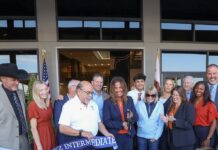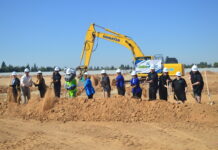
The Clovis City Council conducted a public information meeting on existing Regional Housing Needs (RHN) Overlay Zones and the council’s future changes.
Tuesday’s meeting comes six days before the council’s annual meeting to review and update properties included within the RHN Overlay Zone District.
David Merchen, the Clovis city planner responsible for the annual review and update presentation, headed the public forum. This forum was to inform the community of the potential changes that may take place at Monday’s March 15 meeting.
The goal of next Monday’s annual meeting is to update and list sites and parcels that will no longer qualify with the State Department of Housing and Community Development (HCD) regulations.
“At the time [of the review],…parcels that are no longer eligible can be removed. And any new parcels that may need to be added can do so,” Merchen said. “Parcels can be added during the annual review, as necessary, to allow the city to continue to meet its housing obligations.”
In 2018, the city established different programs, including the RHN Overlay Zone, to provide sufficient land inventory.
For each element housing cycle, the city must show sufficient land inventory to accommodate its housing needs. The state, as well as the Fresno County Council of Governments, determines the inventory. These updates take place every eight years.
“We must provide an inventory for low, moderate and above moderate-income housing opportunities,” Merchen said. “The state [HCD]…generally determines, not exclusively, but makes a general determination…according to the number of units per acre, or the density.”
The city has recognized both sites that will need to be removed from the inventory for not meeting regulations and sites that will be added.
“The city council will review, both the removal of sites from the map that we’ve already determined really should be removed, and the addition of new overlay sites that meet the qualifications of the program,” Merchen said.
The city identified six sites in terms of new additions of overlay sites to meet the city’s requirement for high-density housing.
Located in the southern part of the city is a cluster of four of the six sites. A site north of Shaw Avenue is the fifth location, and the final site is nearby Herndon and Peach Avenues.
At the program’s initiation in 2018, there were 32 eligible sites identified, but two of those sites were removed from the program, leaving 30 sites in the city’s inventory.
The removal of an additional five original sites will also occur because those sites were developed with other projects that are not RHN Overlay eligible or qualifying projects.
In the newest map update, a total of seven of the original 32 sites will be removed.







